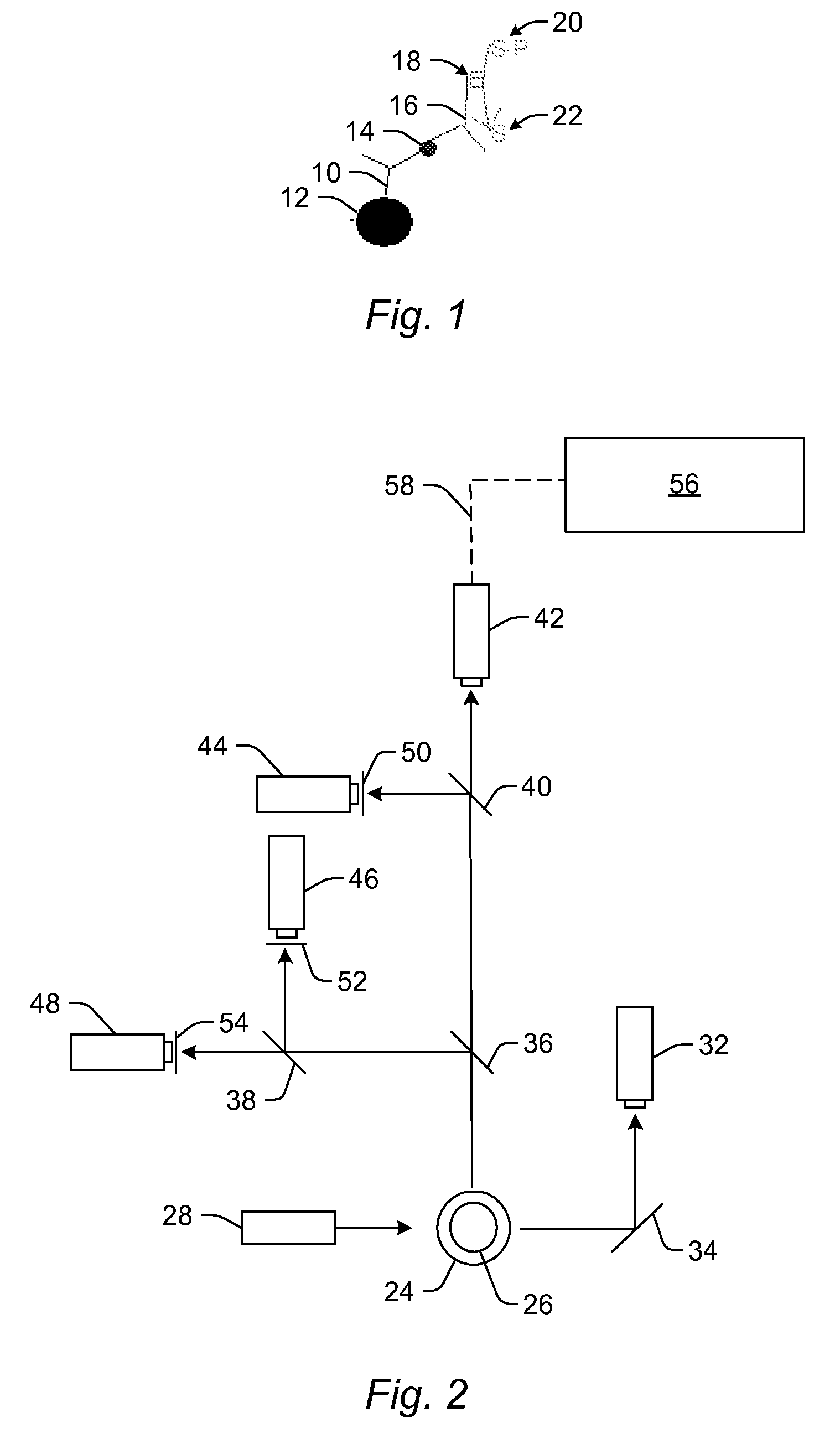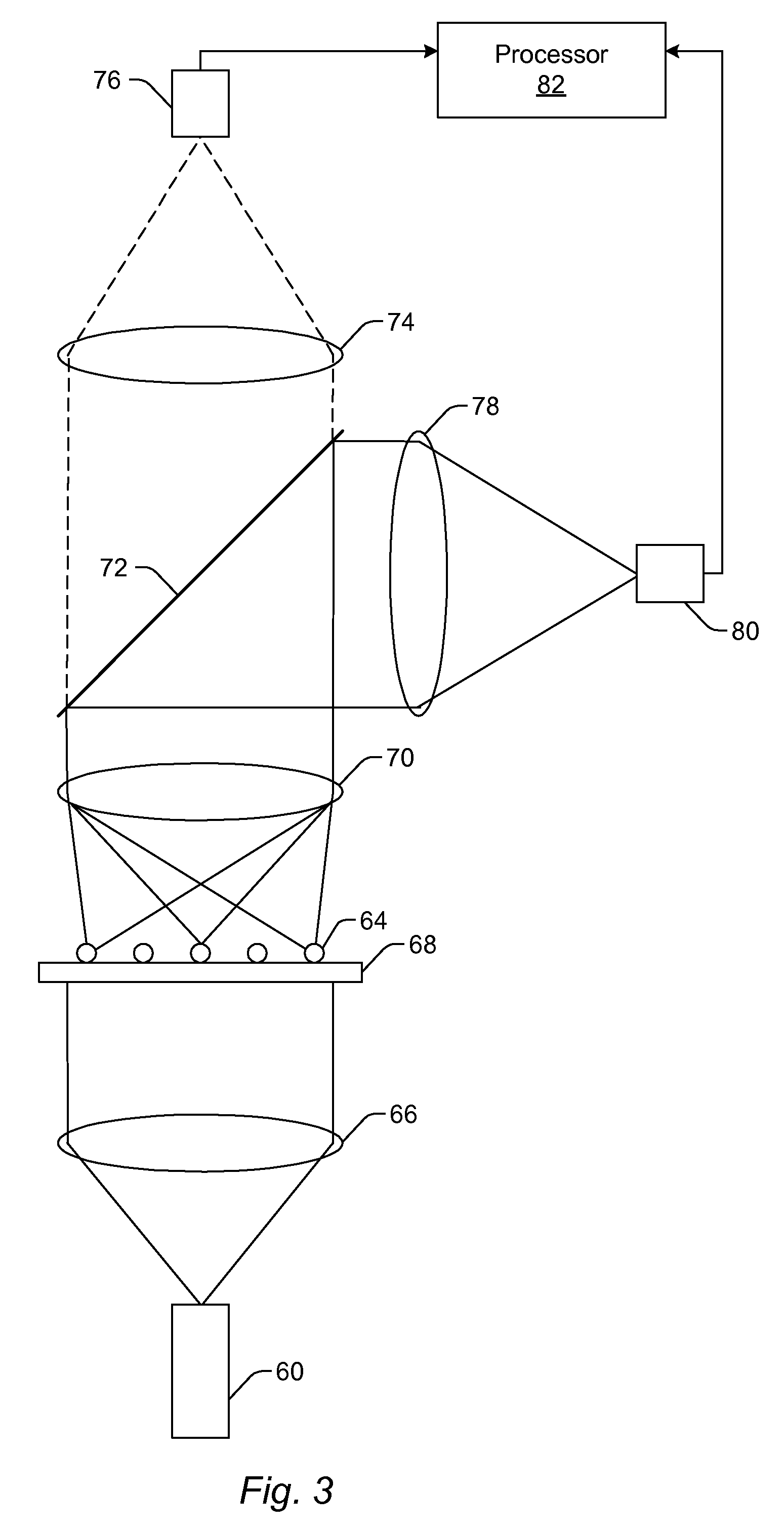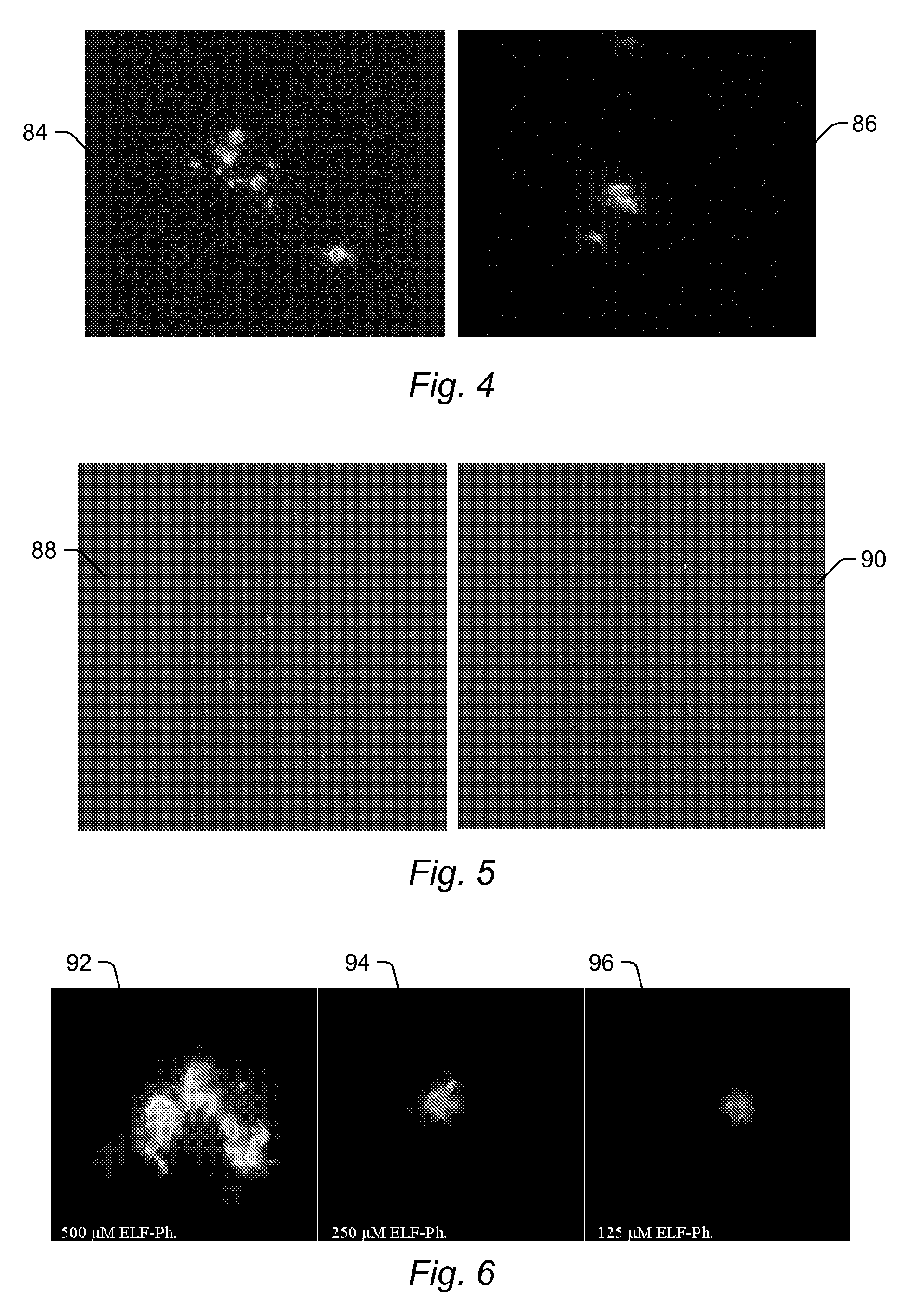Methods, Products, and Kits for Identifying an Analyte in a Sample
- Summary
- Abstract
- Description
- Claims
- Application Information
AI Technical Summary
Problems solved by technology
Method used
Image
Examples
example 1
CIAP Coupling to Carboxylated Microspheres
[0076]Calf intestinal alkaline phosphatase (CIAP, Invitrogen), supplied in a Tris-based buffer, was dialyzed into 100 mM 2-(N-morpholino)ethanesulfonic acid (MES) pH 6.0 using Zeba™ Desalt Columns, which were obtained from Pierce Biotechnology, Inc., Rockford, Ill., before microsphere coupling. Standard, two-step carbodiimide reaction chemistry was used to couple CIAP to microspheres. Briefly, 5×106 of the stock carboxylated microspheres (obtained from Luminex) were washed in water and resuspended in 100 mM monobasic sodium phosphate pH 6.2. The microspheres were activated by addition of 50 mg / mL N-hydroxysulfosuccinimide (Sulfo-NHS, obtained from Pierce) followed by 50 mg / mL 1-Ethyl-3-[3-dimethylaminopropyl]carbodiimide hydrochloride (EDC, obtained from Pierce) and allowed to incubate at room temperature for 20 minutes protected from light. Following incubation, the activated microspheres were washed twice and resuspended in 100 mM MES pH 6...
example 2
ELF® 97 Phosphate Reaction Conditions
[0077]A variety of ELF® 97 phosphate (obtained from Invitrogen) reactions were performed to determine the optimal conditions for microsphere coupled-CIAP generated ELF® 97 alcohol interaction with the microsphere surface and / or reactants bound thereto. All reactions were performed in 1× Tris-ethylenediaminetetraacetic acid (Tris-EDTA or TE) at 37° C. for 1 hour with agitation (1150 rpm) in a total reaction volume of 100 μL. Two different concentrations of microsphere-coupled CIAP were tested. Reactions were performed using either 200,000 or 5,000 CIAP-coupled microspheres. Three concentrations of ELF® 97 phosphate were also tested at each CIAP-coupled microsphere concentration: 500 μM, 250 μM, and 125 μM. ELF® 97 phosphate was filtered using 0.2 μm ELF® spin filters (obtained from Invitrogen) prior to use in every reaction to remove any preformed ELF® 97 alcohol crystals, as per the manufacturer's recommendation. ELF® 97 alcohol (obtained from In...
example 3
Confocal Imaging
[0078]The Leica SP2 ABOS confocal microscope located in the Institute for Cellular and Molecular Biology Core Facility at the University of Texas at Austin was employed to examine the interaction of fluorescent ELF® 97 alcohol with the surface of the CIAP-coupled microspheres. ELF® 97 alcohol was excited in the ultraviolet (UV) region (about 350 nm), and emission was detected between 500 nm and 550 nm in the yellow-green region. The internal dyes of the carboxylated microspheres were excited at 635 nm, and emission was detected from 660 nm and 710 nm. For most reactions, 2 40× objective fields were imaged. Through-focus series were generated for some samples to examine the 3-dimensional structure of the ELF® 97 alcohol crystal matrix on the microspheres. The confocal settings varied with the sample imaged since the intensity of the ELF® 97 alcohol signal was proportional to the size of the ELF® 97 alcohol crystal formed at the microsphere surface. Furthermore, signal...
PUM
 Login to View More
Login to View More Abstract
Description
Claims
Application Information
 Login to View More
Login to View More - R&D
- Intellectual Property
- Life Sciences
- Materials
- Tech Scout
- Unparalleled Data Quality
- Higher Quality Content
- 60% Fewer Hallucinations
Browse by: Latest US Patents, China's latest patents, Technical Efficacy Thesaurus, Application Domain, Technology Topic, Popular Technical Reports.
© 2025 PatSnap. All rights reserved.Legal|Privacy policy|Modern Slavery Act Transparency Statement|Sitemap|About US| Contact US: help@patsnap.com



